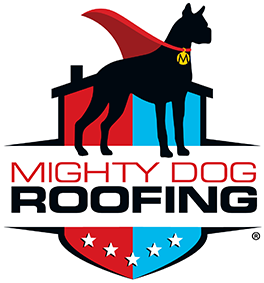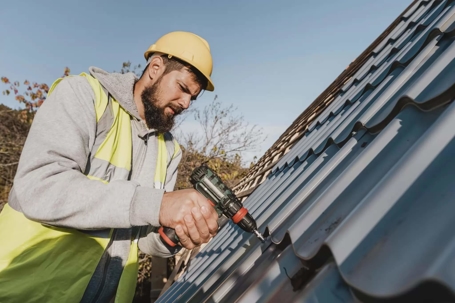Guide to Roof Overlays: Cost, Benefits, and Function
Everything you need to know about alternative roof replacement
When it comes to having your roof installed, things can get a bit more complicated than you might anticipate. In some cases, damage to your roof will require a complete roof replacement, in others you may be able to get away with an overlay, saving time and money, but also delaying the inevitable.
In this article, we will go over the basics of roof overlay, how much it costs, its pros and cons, and the factors that will help you decide whether you should choose an overlay or initiate the tear-off.
What Is A Roof Overlay?
A roof overlay refers to the process of your roofer putting a second set of shingles on top of your existing roof. This is different from a tear-off in that the roofer will not make any changes to the original shingles. This may not be as common as a complete roof replacement; however, people often prefer this option if they’re looking to save money and time. The roofer will lay new shingles on top of the existing shingles, hence, giving it its name "overlay."
In the past, roof overlay was more common primarily because it’s cheaper and faster; however, most roofers today won’t recommend this solution for a few reasons we’ll get into momentarily.
Difference Between Roof Overlay And Tear-Off
The difference between a roof overlay and tear-off is evident in their names. A roof tear-off is the process of removing the old roof entirely and installing a new one with completely new materials. On the other hand, roof overlay is when the existing structure of the roof is not changed, and new shingles are fixed right on top of it, usually to patch damaged or crumbling shingles, fix a leak, or improve the overall appearance of a roof.
Cost Of Overlaying Your Roof
When we compare roof overlay with a roof tear-off, the former is the much more affordable option. The reason behind this is simple. The tear-off method includes several processes, and the purchase of all new material. You can generally expect to pay between $6,000 and $20,000 for a new roof depending on the roof type, size, complexity, region, and labor requirements.
No quality roofing project is going to be cheap, but a roof replacement is a considerable amount, especially if you’re paying for it without the help of homeowners insurance.
As a roof overlay does not require tearing off the previous roof, redecking it, or doing as much cleanup, it requires far less money on labor. On average, the cost of having a new roof made by tear-off in the States is between $8,000 and $15,000. Remove the cost of labor for tear-off and the dump fees from this amount, and you can easily calculate the money you will be spending on your roof overlay. It’s usually going to add up to less than $10,000 however, the lifespan of the roof overlay and the value it can subtract from your house can add up in the long run, often making it a more expensive choice.
Pros And Cons Of A Roof Overlay
As we’ve mentioned, most roofing companies do not recommend a roof overlay, emphasizing its cons. However, in some situations, a roof overlay can have its advantages. In order to make it easier for you to decide, we have made a list of all the pros and cons that come with choosing a roof overlay for your roof installment.
PROS
- Less expensive
As mentioned earlier, roof overlay only requires adding another layer of shingles above the existing one. Since the labor will not need to remove the original shingles, the labor cost will be substantially less. Furthermore, you won’t need to pay for repairs to the roof underlayment or dispose of the original shingles.
- Shorter construction duration
While every roof will require a tear-off procedure eventually, you might not always have the time for it, especially if you’re trying to run a business. If the lost revenue accounts for more than you’d lose by delaying a replacement for a few years, an overlay might not be a bad option. If you want to get a new roof within less time, then roof overlay is the option for you. In some cases, you can get the project done on a weekend and not lose a day of business.
- Creates less mess
Deciding to go for a tear-off can get a bit messy, to say the least. The process involves tearing down old shingles, and consequently, a lot of debris and materials will be scattered everywhere. This creates a mess that many people are not comfortable with. While reputable roofing companies will take care of this cleanup with minimal mess before the project is done, the in-between phase can be daunting for those who want to avoid dust and damage to their lawn. A roof overlay, the entire process will be much cleaner. However, let us clarify here that there will be some debris from the cutting and fitting of the new shingles, but this will be far less compared to the other option.
CONS
- It adds weight to your home
While adding two layers to your roof may sound like you are protecting yourself, you are also adding weight to your house. This may not be an issue if your original roof is strong enough. However, for other houses, this added weight can question the roof's structural integrity, and eventually cause sagging.
- Your roof can end up uneven
If the original layer of shingles is relatively old, the overlay may appear uneven because of the years of wear and tear. These shingles might have curled up, and the wood decking beneath it might have soft spots that create dips between the trusses. If you add a second layer of shingles on top of this, the new roof might end up looking uneven.
- Has a risk of a shorter lifespan
When you add an additional layer of shingles to your roof, it will catch extra heat as well. As a result, the new shingles can curl and break down sooner. This will result in your roof overlay having a shorter lifespan than a roof replacement.
- Does not address issues of underlayment
Sometimes your shingles aren't the only issue with your roof. When you decide to go for roof installation, make sure you have a detailed inspection conducted. This way there will be no surprises when it comes to the condition of your roof underneath the existing shingles. For instance, if there is a problem with the roof decking, adding another layer of shingles won't be able to solve it. This will result in greater problems later, especially with the added weight.
- Increase in the cost of roof teardown the next time
You might save some money by choosing an overlay initially, however, when the time comes to replace the roof, you will likely end up spending more money in labor costs to remove the added shingles.
- More difficult to maintain
When you have two layers of shingles, maintenance can become more difficult. For example, if you have a leak in your roof, the water will move through both shingles' layers. This will eventually make it more difficult to track down the source of the problem. Double the layers mean double the complexity.
- Could lower the resale value
If you ever plan on selling your house, roof overlays could end up decreasing your house's resale value. When people buy homes, they are very cautious about whether the house has two layers of shingles or one. Home inspectors are aware the buyer will have to pay extra labor costs the next time the roof has to be replaced and that the roof’s current structure may not be ideal.
When Should You Choose A Roof Overlay?
If you’re in a financial bind and you’re dealing with cracked and broken shingles but haven’t experienced a roof leak or mold growth yet, it’s an ideal time to choose a roof overlay. Remember that to qualify for an overlay, your roof needs to be in overall good condition.
This means that your roof may look old and damaged externally, but its sheathing and underlying structure are still reliable. Your shingles might have worn out because of the weather or other external factors, but this doesn't mean that your roof needs to be completely changed.
In this situation, you are essentially revamping the roof's appearance and improving its leak protection. It will also help direct rainwater into your gutters so that it does not cause pooling on your roof.
Another situation that may merit a roofing overlay is if you run a business and would lose more money in lost revenue by closing than you would by paying for an overlay and a roof replacement a few years down the road.
When Should You Not Go For An Overlay?
While it may have its uses, an overlay is not recommended in every situation. The only way to know whether you should choose this option is by hiring a professional to conduct an in-depth inspection of your roof.
A licensed contractor will be able to find faults in your roof that may not be visible to the untrained eye, which is why a roofing inspection is paramount before making any decisions.
Although there are many reasons why a roofing expert may not recommend overlaying, one of the most predominant ones is when you do not have asphalt shingles. If you have slate or wood tiles, adding a layer of shingles is completely impossible. In this case, the only option you have is to remove these slates or wood tiles and install a new shingle roof altogether.
Another reason why your roof inspection expert may advise against overlaying is if they notice that the roof is not flat and even. Over time, shingles can curl owing to different reasons. Therefore, adding a new layer on top of them will not only make your roof even more uneven but will also not address the underlying cause behind the curling.
Your roof can only have two layers of shingles, and adding another one on top of that can make your roof too heavy. If your roof already has two layers of shingles, overlaying is out of the question.
Last but definitely not least, as we know by now, overlaying is only possible when your original shingles have become old due to external conditions. If there are other more serious problems with your roof, it is important that you address that as well. For this, you would need to tear your roof and install a new one entirely.
Conclusion
In the right circumstances, an overlay can be a great cost-effective option, especially for those people who do not need a complete roof tear-off. If your roof is in good condition but happens to be near the end of its life cycle, then this is an option you can consider.
Would you like to learn more about how you can improve the look and function of your roof? Or would you like to schedule a comprehensive roofing inspection? Dial (844) 942-4081 or contact your local Mighty Dog Roofing office today.


